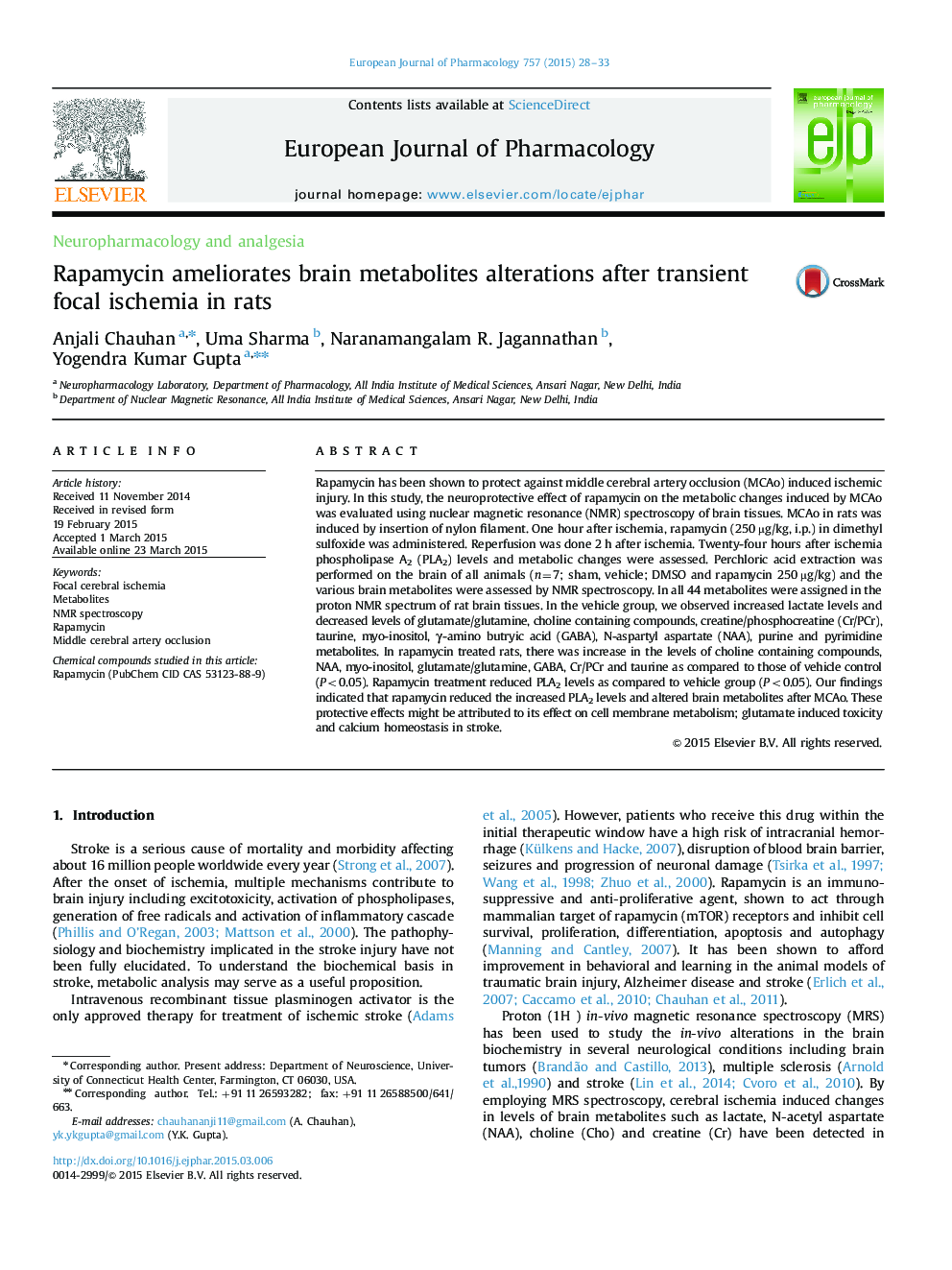| Article ID | Journal | Published Year | Pages | File Type |
|---|---|---|---|---|
| 2531460 | European Journal of Pharmacology | 2015 | 6 Pages |
Rapamycin has been shown to protect against middle cerebral artery occlusion (MCAo) induced ischemic injury. In this study, the neuroprotective effect of rapamycin on the metabolic changes induced by MCAo was evaluated using nuclear magnetic resonance (NMR) spectroscopy of brain tissues. MCAo in rats was induced by insertion of nylon filament. One hour after ischemia, rapamycin (250 µg/kg, i.p.) in dimethyl sulfoxide was administered. Reperfusion was done 2 h after ischemia. Twenty-four hours after ischemia phospholipase A2 (PLA2) levels and metabolic changes were assessed. Perchloric acid extraction was performed on the brain of all animals (n=7; sham, vehicle; DMSO and rapamycin 250 µg/kg) and the various brain metabolites were assessed by NMR spectroscopy. In all 44 metabolites were assigned in the proton NMR spectrum of rat brain tissues. In the vehicle group, we observed increased lactate levels and decreased levels of glutamate/glutamine, choline containing compounds, creatine/phosphocreatine (Cr/PCr), taurine, myo-inositol, γ-amino butryic acid (GABA), N-aspartyl aspartate (NAA), purine and pyrimidine metabolites. In rapamycin treated rats, there was increase in the levels of choline containing compounds, NAA, myo-inositol, glutamate/glutamine, GABA, Cr/PCr and taurine as compared to those of vehicle control (P<0.05). Rapamycin treatment reduced PLA2 levels as compared to vehicle group (P<0.05). Our findings indicated that rapamycin reduced the increased PLA2 levels and altered brain metabolites after MCAo. These protective effects might be attributed to its effect on cell membrane metabolism; glutamate induced toxicity and calcium homeostasis in stroke.
Graphical abstractFigure optionsDownload full-size imageDownload high-quality image (116 K)Download as PowerPoint slide
